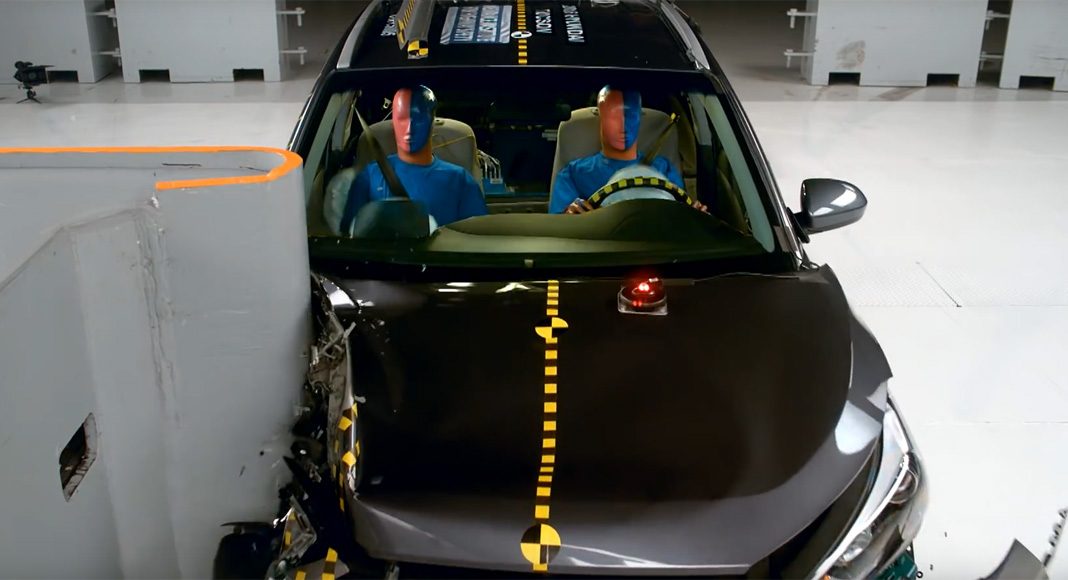Drivers of vehicles with good small overlap front ratings from the Insurance Institute from Highway Safety can expect to be protected well in a frontal crash involving the left corner of the vehicle. But how would the passengers sitting next to them fare in a right-side small overlap crash? A new study shows that good protection doesnât always extend across the front seat.
The Institute conducted 40 mph passenger-side small overlap tests on seven small SUVs with good driver-side small overlap ratings. Only one of the vehicles, the 2016 Hyundai Tucson, performed at a level corresponding to a good rating, and the others ranged from poor to acceptable.
The results have prompted IIHS to consider instituting a passenger-side rating as part of its Top Safety Pick criteria.
âThis is an important aspect of occupant protection that needs more attention,â said Becky Mueller, an IIHS senior research engineer and the lead author of the study. âMore than 1,600 right-front passengers died in frontal crashes in 2014.â
IIHS introduced the small overlap test in 2012, following the success of the moderate overlap front test in spurring automakers to make improvements. While the moderate overlap test involves 40 per cent of the width of the vehicle, the small overlap test involves just 25 per cent. It is designed to replicate what happens when the front corner of a vehicle collides with another vehicle or an object like a tree or utility pole.
Small overlap crashes pose a challenge because they bypass a typical vehicleâs main front structure.
Since the test was introduced, 13 manufacturers have made structural changes to 97 vehicles. Of these, nearly three-quarters earned a good rating after the changes.
IIHS conducts its tests for frontal ratings with a driver dummy and with the barrier overlapping the driver side. The reason for this is that every vehicle on the road has a driver, but there isnât always a passenger riding along.
âItâs not surprising that automakers would focus their initial efforts to improve small overlap protection on the side of the vehicle that we conduct the tests on,â said David Zuby, IIHS executive vice president and chief research officer. âIn fact, we encouraged them to do that in the short term if it meant they could quickly make driver-side improvements to more vehicles. As time goes by, though, we would hope they ensure similar levels of protection on both sides.â
The recent passenger-side tests show how big the differences can be. In this group of small SUVs, most didnât perform as well when they were crashed into a barrier on the right side instead of the left. That was even true of models that appeared symmetrical after removing bumper covers and other external components.
âWhen structural improvements are visible only on the driver side, there are large differences in performance,â Mueller said. âBut the inverse is not true. Some vehicle structures look the same on both sides, but they don’t perform the same. Thatâs why we canât rely on visual analysis but need to monitor this issue and possibly begin rating vehicles for passenger-side protection.â
IIHS passenger-side small overlap ratings would address this issue. The Institute could start such a program next year and make it a requirement for one of its safety awards as early as 2018.



















